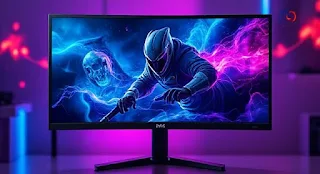Gaming Gadgets of the Year 2025: What Every Gamer Needs to Try
Gaming in 2025 is nothing short of exhilarating. With rapid technological advancements, staying on top of the latest gaming gadgets is every player's dream. Whether you're a casual gamer or a dedicated pro, finding the right tools can make all the difference. In this guide, we’ll explore the gaming gadgets of 2025 that every gamer needs to try and why they’ve earned their place on this list.
Let’s tackle some common questions gamers have and explore how these groundbreaking devices address them. Spoiler: You're in for some jaw-dropping innovations.
Common Questions and Concerns Gamers Have
Gamers today face a variety of questions, such as:
What are the most efficient gaming gadgets this year?
How can I enhance my gaming experience without breaking the bank?
Are these new gadgets compatible with my current setup?
Which devices stand out for competitive gaming?
The answers to these questions reveal a diverse range of gadgets designed to elevate your gaming performance and overall enjoyment.
The Must-Try Gaming Gadgets of 2025
I Was Once a Beginner Too, and I Know Exactly How Overwhelming It Can Feel
1. Cloud-Enabled Gaming Controllers
Say goodbye to lag and hello to seamless play! This year’s cloud-enabled gaming controllers are game-changers (pun intended). These controllers are designed to sync directly with cloud gaming platforms, offering smooth, latency-free gameplay. Why they matter:
Built-in Wi-Fi for direct server connections.
Universal compatibility with major platforms like Xbox Cloud Gaming and GeForce NOW.
Advanced haptic feedback for immersive in-game experiences.
Relatable Example: Imagine playing a high-stakes tournament where even a millisecond delay could cost you. A cloud-enabled controller ensures every move registers instantly.
2. AI-Powered Gaming Headsets
The latest AI-powered gaming headsets don’t just offer crystal-clear audio. They actively adapt to your environment, muting background noise while optimizing in-game sounds.
Features to love:
AI-driven sound equalization.
Real-time translation for multiplayer games with global teams.
Noise-cancellation settings that learn from your surroundings.
Why You’ll Love It: You’ll never have to shout, “Can you hear me now?” in the middle of a match again.
3. 8K OLED Gaming Monitors
Visuals in 2025 have reached unparalleled levels. The 8K OLED gaming monitors bring depth, color, and fluidity to life like never before. Whether you're venturing into mystical worlds or facing enemies in fast-paced shooters, these monitors deliver cinematic visuals.
Key Specs:
240Hz refresh rates for ultra-smooth gameplay.
HDR10+ support for stunning contrasts.
Minimal input lag to stay competitive.
4. Haptic Feedback Gaming Gloves
Feeling the game beyond just the controller? That’s exactly what haptic feedback gaming gloves deliver. These gloves use advanced touch simulation to make you feel textures, impacts, and even weather conditions in-game.
Imagine this: You're playing a survival game, and you can feel the chill of a virtual snowstorm or the tension of pulling back a bowstring.
5. Modular Gaming Keyboards
Customization is king in 2025, and modular gaming keyboards offer limitless possibilities. These keyboards let you swap out keys, adjust layouts, and add personalized lighting effects.
Standout Features:
Hot-swappable keys for tailored setups.
RGB lighting synced with in-game actions.
Enhanced ergonomic designs for longer gaming sessions.
Fun Fact: Pro gamers swear by these keyboards for their responsiveness and adaptability during competitions.
Mastering AR Game Development with Unity: A Step-by-Step Guide for Success
6. Portable VR Devices
Virtual reality has gone portable! All-in-one VR headsets in 2025 offer console-quality experiences without the need for a PC or external sensors. This opens up new dimensions of immersive gaming on the go.
Perks:
Lightweight and ergonomic designs.
Built-in storage for seamless gameplay.
Multiplayer VR capabilities.
Perfect for: Gamers who love exploring open worlds or battling foes in virtual arenas.
Making Informed Choices
When it comes to buying the gaming gadgets of the year, here are some tips:
Set a Budget: Determine how much you're willing to invest.
Check Compatibility: Ensure the gadget works with your existing setup.
Read Reviews: Look for hands-on reviews or demo videos.
Test Before You Buy: Visit gaming expos or stores to try the devices firsthand.
Staying Engaged: Let’s Talk
What excites you most about this year’s gaming gadgets? Share your favorite innovations or ask questions about the ones listed here. Drop a comment below or share this article with fellow gamers. Your thoughts could inspire others to upgrade their setup!
Final Takeaway: The gaming gadgets of 2025 promise to redefine how we play, connect, and immerse ourselves in virtual worlds. Embrace these tools, and let your gaming adventures reach new heights.

Comments